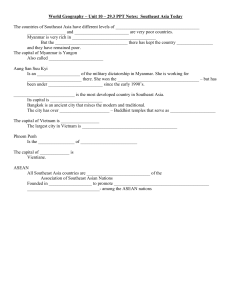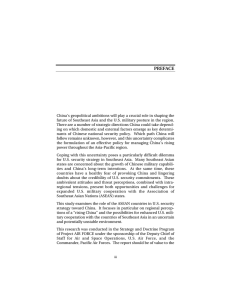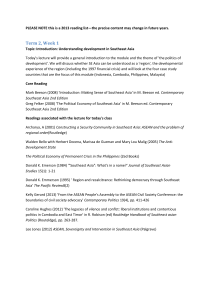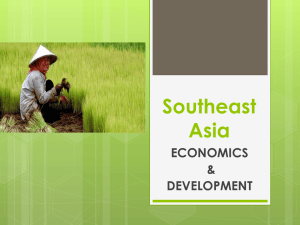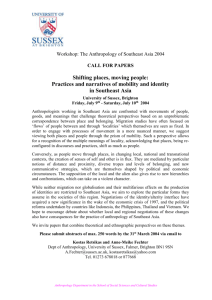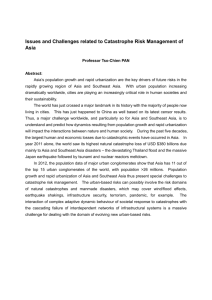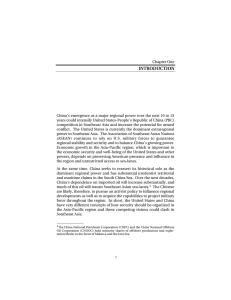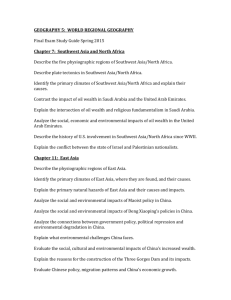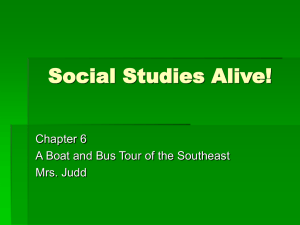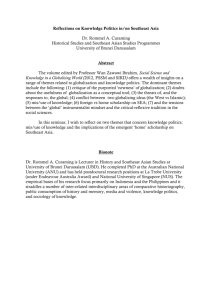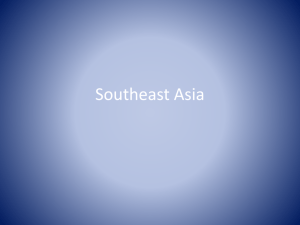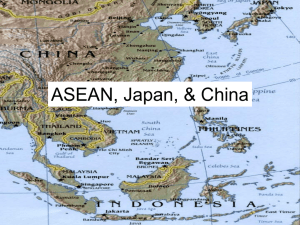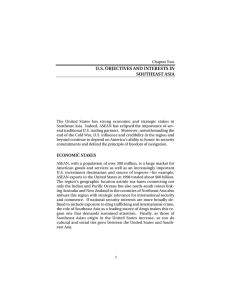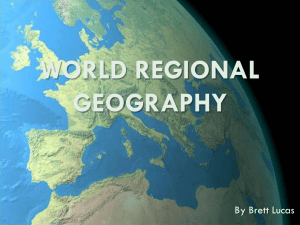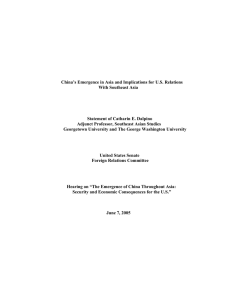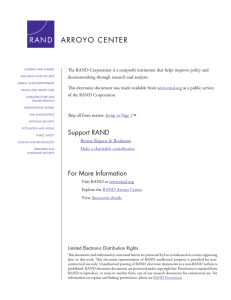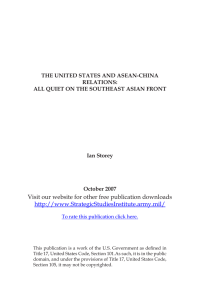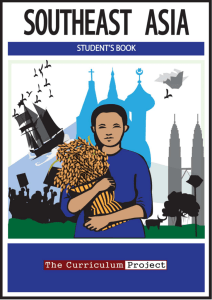Science Year
advertisement
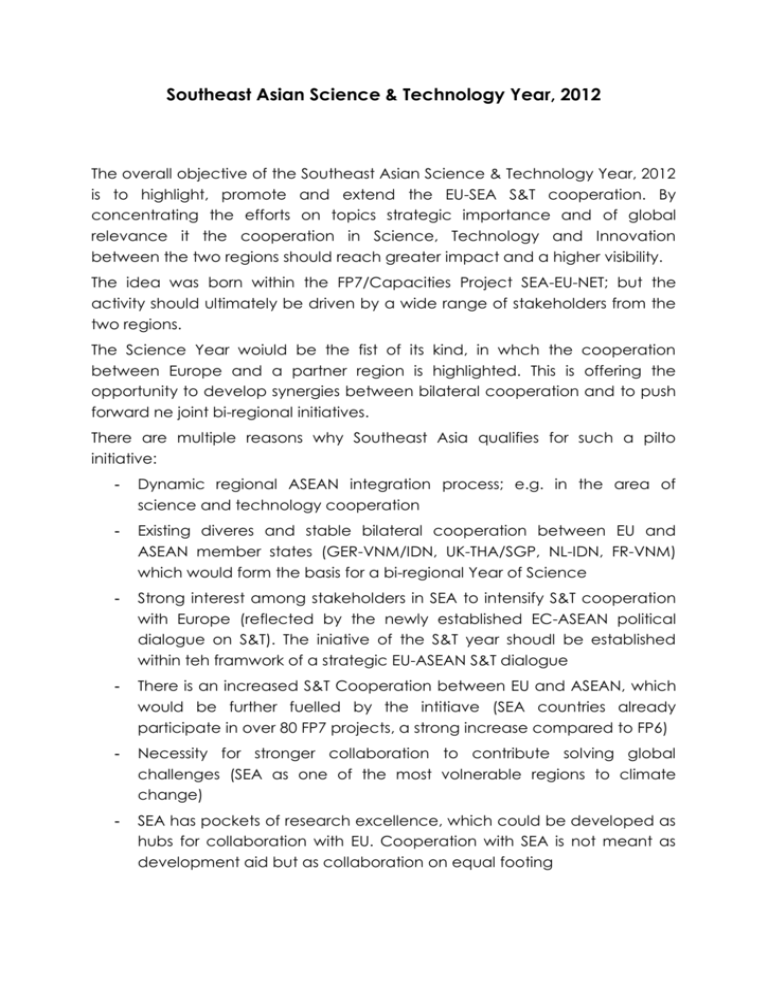
Southeast Asian Science & Technology Year, 2012 The overall objective of the Southeast Asian Science & Technology Year, 2012 is to highlight, promote and extend the EU-SEA S&T cooperation. By concentrating the efforts on topics strategic importance and of global relevance it the cooperation in Science, Technology and Innovation between the two regions should reach greater impact and a higher visibility. The idea was born within the FP7/Capacities Project SEA-EU-NET; but the activity should ultimately be driven by a wide range of stakeholders from the two regions. The Science Year woiuld be the fist of its kind, in whch the cooperation between Europe and a partner region is highlighted. This is offering the opportunity to develop synergies between bilateral cooperation and to push forward ne joint bi-regional initiatives. There are multiple reasons why Southeast Asia qualifies for such a pilto initiative: - Dynamic regional ASEAN integration process; e.g. in the area of science and technology cooperation - Existing diveres and stable bilateral cooperation between EU and ASEAN member states (GER-VNM/IDN, UK-THA/SGP, NL-IDN, FR-VNM) which would form the basis for a bi-regional Year of Science - Strong interest among stakeholders in SEA to intensify S&T cooperation with Europe (reflected by the newly established EC-ASEAN political dialogue on S&T). The iniative of the S&T year shoudl be established within teh framwork of a strategic EU-ASEAN S&T dialogue - There is an increased S&T Cooperation between EU and ASEAN, which would be further fuelled by the intitiave (SEA countries already participate in over 80 FP7 projects, a strong increase compared to FP6) - Necessity for stronger collaboration to contribute solving global challenges (SEA as one of the most volnerable regions to climate change) - SEA has pockets of research excellence, which could be developed as hubs for collaboration with EU. Cooperation with SEA is not meant as development aid but as collaboration on equal footing 1) Objectives The activities of the Science Year should be based on three pillars Political Dialogue on S&T Communication between political stakeholders on the thematic priorities and instruments for future cooperation, with the following specific objectives: To acknowledge the long-lasting relations in S&T between the two regions and to give an impetus for future activities Give impetus for new joint activities Enlarging bi-lateral cooperation towards bi-regional cooperation patterns To identify common global research challenges and to identify ways to tackle them Science awareness/Science communication Communication with the wider pubic on the relevance and importance of S&T, with the following specific objective To promote and disseminate success stories of EU-SEA S&T cooperation To increase the visibility towards the public of the diverse and longlasting S&T relations between the two regions To promote the competencies in S&T in Europe and Southeast Asia in the respective regions S&T cooperation Concrete Instruments and activities to support scientists; e.g. Targeted calls/SICAs for SEA in the FP7Cooperation programme 2013 To launch new initiatives and activities in research funding and research cooperation that are of strategic interest for both regions To foster mobility of ideas, researchers and research personnel between the two regions 2) Activities and Instruments There should be a variety of different activities and instruments undertaken during the EU-SEA S&T year, most notably events, the launch of new cooperation actions and the development of a joint communication platform Kick-off event with high political and public visibility (beginning 2012) Road shows – series of information & scientific events promoting biregional S&T cooperation (participation in FP7 and other European & international programs, e.g. Aid Cooperation, World Bank, etc.); Scientists of specific scientific disciplines as well as programme experts will be invited from both the EU and the SEA-region. Main goal of the road show is to enhance cooperation between the regions and encourage joint proposals. Innovation fora and workshops to initiate new forms of bi-regional cooperation Participation in leading S&T fairs in Europe and Southeast Asia Summer Schools Complementary actions; in particular in the area of capacity building and technical cooperation - Implementation of a communication and information strategy; incl series of publications to highlight successful S&T cooperation projects 3) Stakeholders, actors - Policy makers in Science, Technology and Innovation - S&T funding organisations in both regions - Research Organisations, Universities and individual researchers as the main actors of research cooperation and collaborative action - Technology oriented companies in Europe and Southeast Asia - Multipliers, Media and the interested public - Non-governmental organisations, foundations, etc, involved in S&T and capacity building 4) Steps to take to implement - Invitation Letter to Stakeholder institutions in EU and SEA (February 2011) - Internal Management meeting of all supporting institutions (April 2011 – via webconference) - Launch of YoS Communications platform (June 2011) - Kick-off event Hanoi/Vietnam) with High-level policy makers (Nov 2011,
